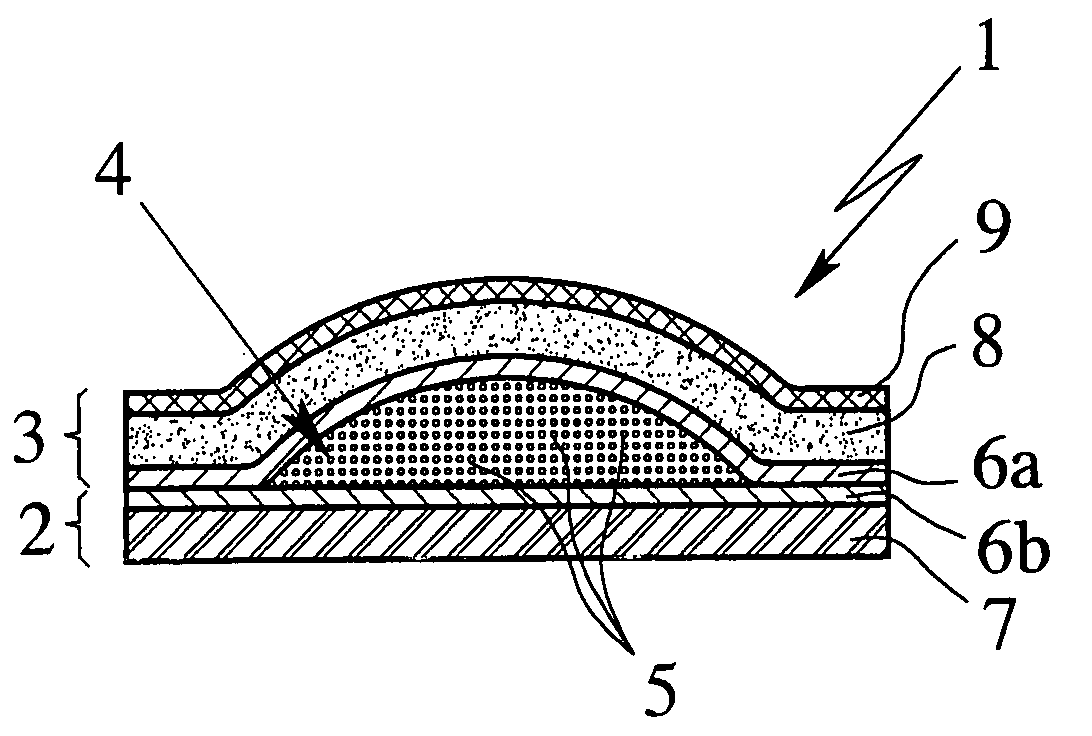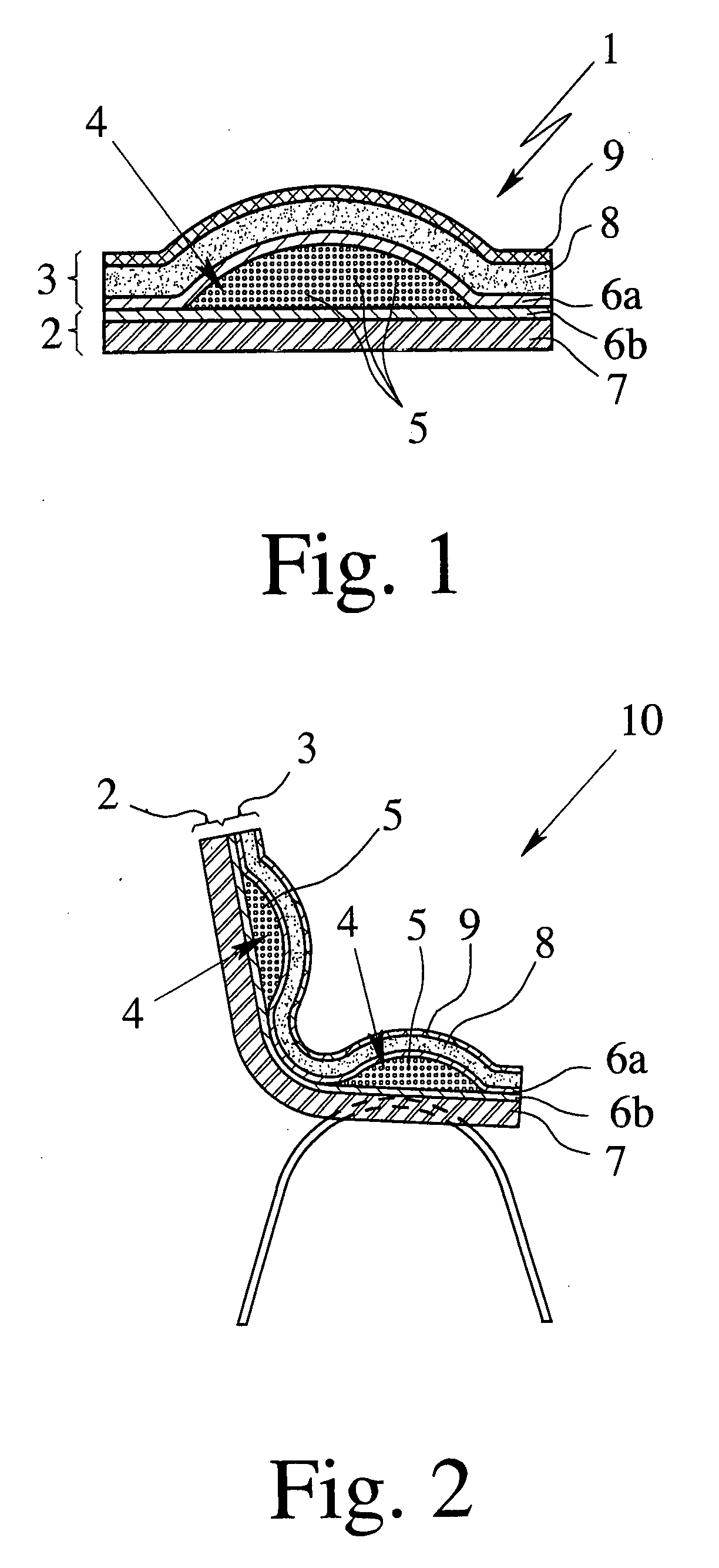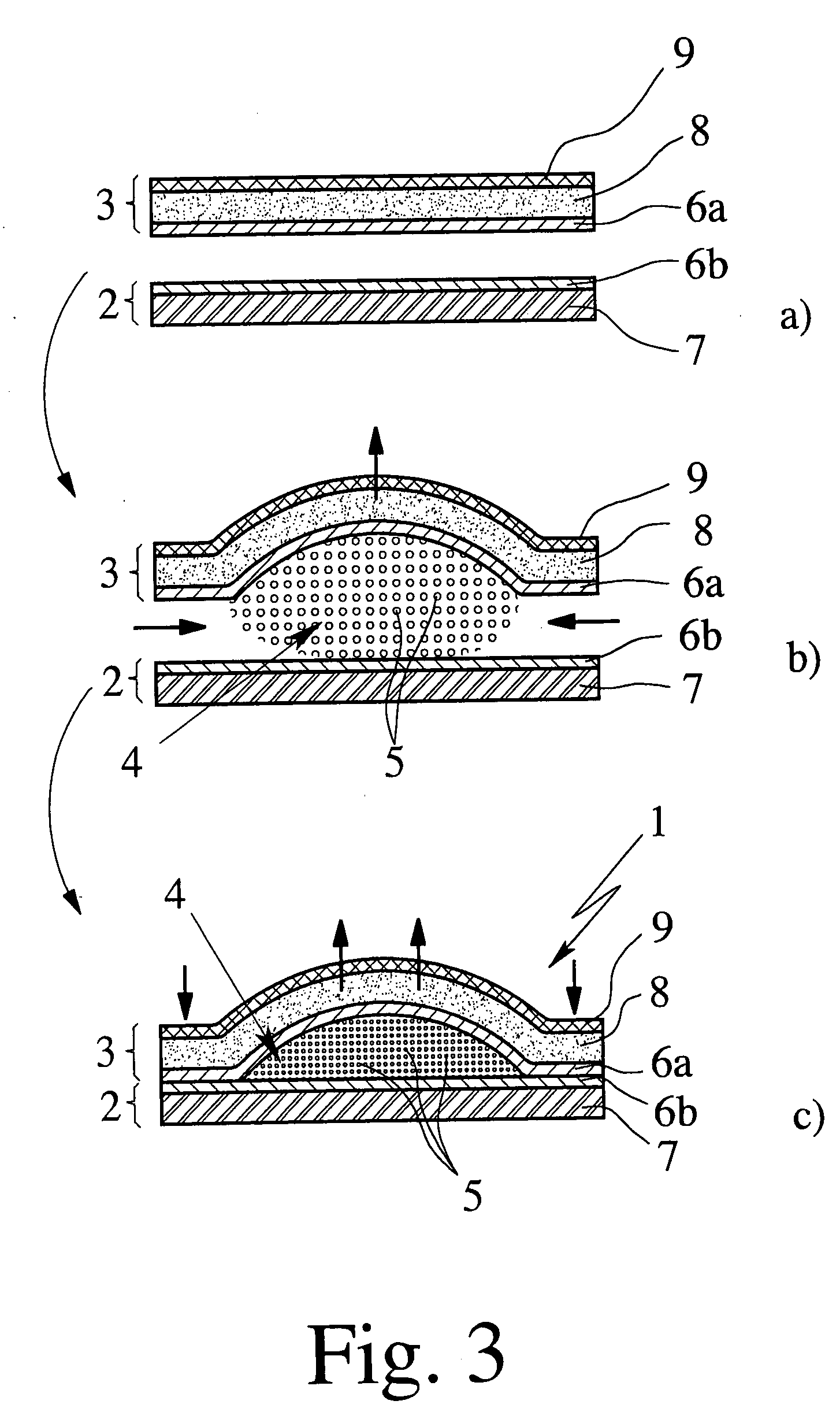Three-dimensional cavity-formed part having a multilayered structure and process of its manufacture
a three-dimensional cavity and multi-layered technology, applied in the direction of seating furniture, stools, thin material handling, etc., can solve the problems of inability to introduce or arrange cavities, cumbersome and cost-intensive, difficult and costly in the prior art to outfit the molded piece with deformable,
- Summary
- Abstract
- Description
- Claims
- Application Information
AI Technical Summary
Problems solved by technology
Method used
Image
Examples
Embodiment Construction
[0030]For the purposes of promoting an understanding of the disclosure, reference will now be made to the embodiments illustrated in the drawings and specific language will be used to describe the same. It will nevertheless be understood that no limitation of the scope of the disclosure is thereby intended, such alterations and further modifications in the illustrated device and its use, and such further applications of the principles of the disclosure as illustrated therein being contemplated as would normally occur to one skilled in the art to which the disclosure relates.
[0031]In the figures, the same reference numbers are used for the same or similar parts, and corresponding properties and advantages are achieved even if a repeated description is omitted for reasons of simplification.
[0032]FIG. 1 shows an invented three-dimensional hollow molded piece 1 with multilayer construction, which is suitable in particular for the production of furnishings, especially furniture, preferab...
PUM
| Property | Measurement | Unit |
|---|---|---|
| thickness | aaaaa | aaaaa |
| yield stress | aaaaa | aaaaa |
| yield stress | aaaaa | aaaaa |
Abstract
Description
Claims
Application Information
 Login to View More
Login to View More - R&D
- Intellectual Property
- Life Sciences
- Materials
- Tech Scout
- Unparalleled Data Quality
- Higher Quality Content
- 60% Fewer Hallucinations
Browse by: Latest US Patents, China's latest patents, Technical Efficacy Thesaurus, Application Domain, Technology Topic, Popular Technical Reports.
© 2025 PatSnap. All rights reserved.Legal|Privacy policy|Modern Slavery Act Transparency Statement|Sitemap|About US| Contact US: help@patsnap.com



